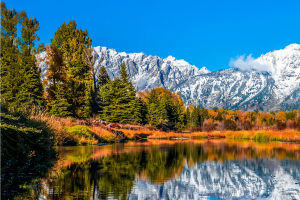Hot chocolate is a timeless drink that warms hearts and hands, especially during the colder months.
But this sweet, comforting beverage has a rich history that goes far beyond modern wintertime rituals.
Its story begins in the ancient civilizations of Mesoamerica, where the earliest version of hot chocolate was far from the sugary drink we know today.
Hot chocolate has evolved into a universal comfort from the sacred, bitter cocoa drinks of the Mayans and Aztecs to the sweetened and spiced variations that took Europe by storm. Let's take a journey through time and discover the fascinating origins of this beloved beverage.
Ancient Cocoa: A Sacred Drink
The origins of hot chocolate date back thousands of years to ancient Mesoamerica, where the Mayans were among the first to cultivate the cacao tree. They revered cacao beans as a sacred gift from the gods and used them to make a ceremonial drink called "xocolatl", a bitter, frothy concoction made by grinding cocoa beans and mixing them with water, chili peppers, and spices. This drink was not sweet or creamy like the hot chocolate we enjoy today but was thought to possess invigorating and even mystical properties.
The Aztecs, who also valued cacao, took it one step further. They used cacao beans as currency and drank their version of hot chocolate, often flavored with vanilla, chili, and other spices, as a way to boost energy and focus. To these ancient peoples, cacao wasn't just a treat; it was a symbol of power, wealth, and divine favor.
The history of chocolate - Deanna Pucciarelli
Video by TED-Ed
Hot Chocolate Arrives in Europe
The story of hot chocolate's journey to Europe began in the 16th century when Spanish conquistadors encountered the Aztecs and their cocoa-based drink. Initially, they found the bitter taste of "xocolatl" off-putting, but it wasn't long before they recognized the value of cacao. The Spaniards brought cacao beans back to Europe, where they began experimenting with sweetening the drink with sugar and cinnamon, making it more palatable for European tastes.
In Spain, hot chocolate quickly became a popular drink among the elite, reserved for royalty and aristocrats. By the 17th century, it had spread to France, where it was adopted by the court of Louis XIV. From there, it reached England and the rest of Europe. Hot chocolate houses, much like today's coffee shops, popped up across major European cities, becoming fashionable meeting places for intellectuals, politicians, and socialites.
From Luxury to Everyday Comfort
For many years, hot chocolate remained a luxurious treat for the wealthy due to the high cost of cacao and sugar. However, as cacao production increased and sugar became more accessible, hot chocolate slowly trickled down to the masses. The Industrial Revolution of the 19th century helped make it even more widespread, with advancements in chocolate processing making cocoa powder more affordable and easier to mix with milk and sugar.
During this time, the recipe for hot chocolate shifted towards what we're familiar with today—sweet, rich, and often made with milk instead of water. It became especially popular in England and America, where it was promoted as both a health tonic and a sweet indulgence. Even doctors of the time recommended it for its supposed restorative properties, and it was commonly served as a drink for breakfast or before bed.
Modern Hot Chocolate: A Global Comfort
Today, hot chocolate is enjoyed in various forms around the world. In the United States, it's typically made with instant cocoa powder and topped with marshmallows or whipped cream, while in Europe, it's often thicker, richer, and served in small cups. In Mexico, "champurrado" is a traditional hot chocolate made with masa (corn dough) and spices, a nod to its ancient roots. Italy's "cioccolata calda" is so thick and decadent that it's almost like drinking melted chocolate.
In recent years, hot chocolate has also undergone a gourmet renaissance, with artisanal versions popping up in cafes and chocolate shops. These versions often feature high-quality cocoa, spices, and even exotic flavors like lavender, sea salt, or chili—bringing the drink back full circle to its ancient, spiced origins.
Hot chocolate has come a long way from ancient Mesoamerica's bitter, spicy cocoa drinks to the sweet, creamy comfort we know today. Over centuries, it has traveled across continents and evolved into a drink that's beloved by people of all ages. Whether you prefer it sweet and simple or rich and decadent, hot chocolate has become a global symbol of warmth, indulgence, and comfort.


